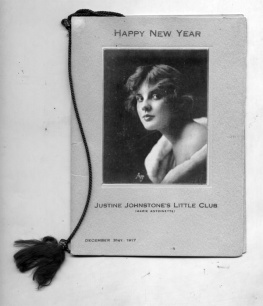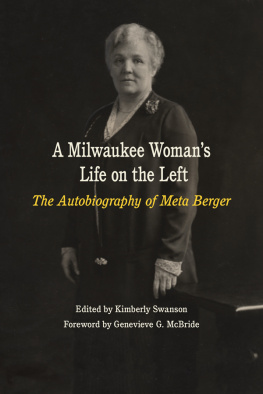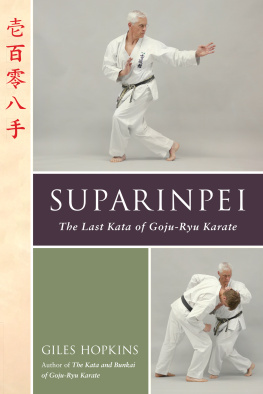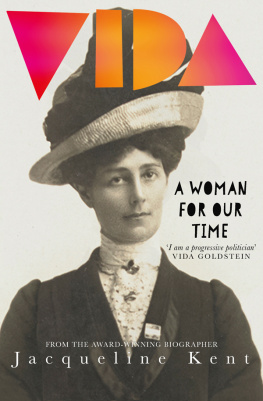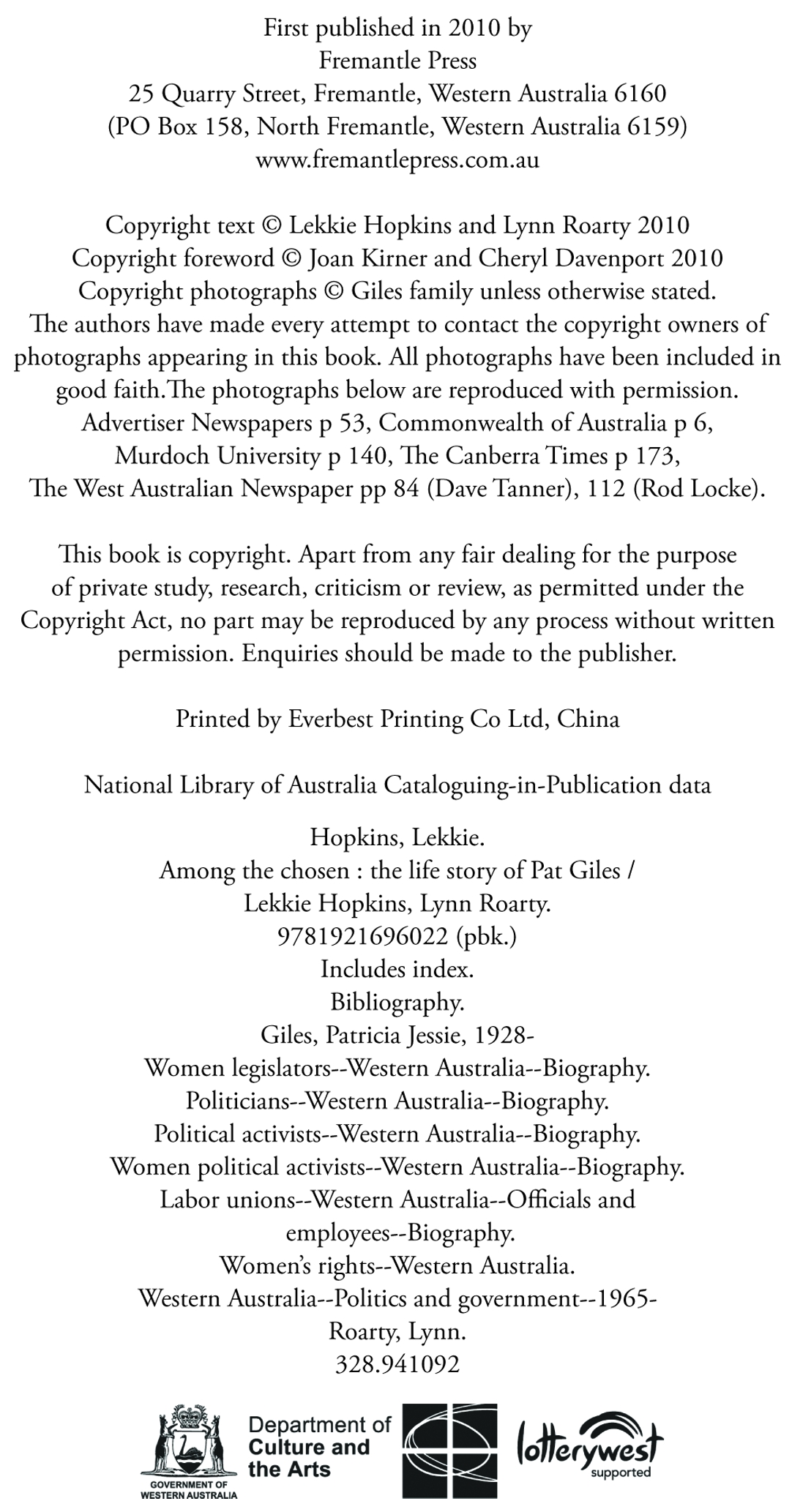
Copyright
To be among the chosen who have struggled and suffered for principles enunciated down the ages by those who have loved liberty, is sufficient recompense for a long life dedicated to the Womens Cause.
Irene Greenwood (18981992), feminist activist, pacifist, broadcaster, writer, and mentor to Pat Giles.
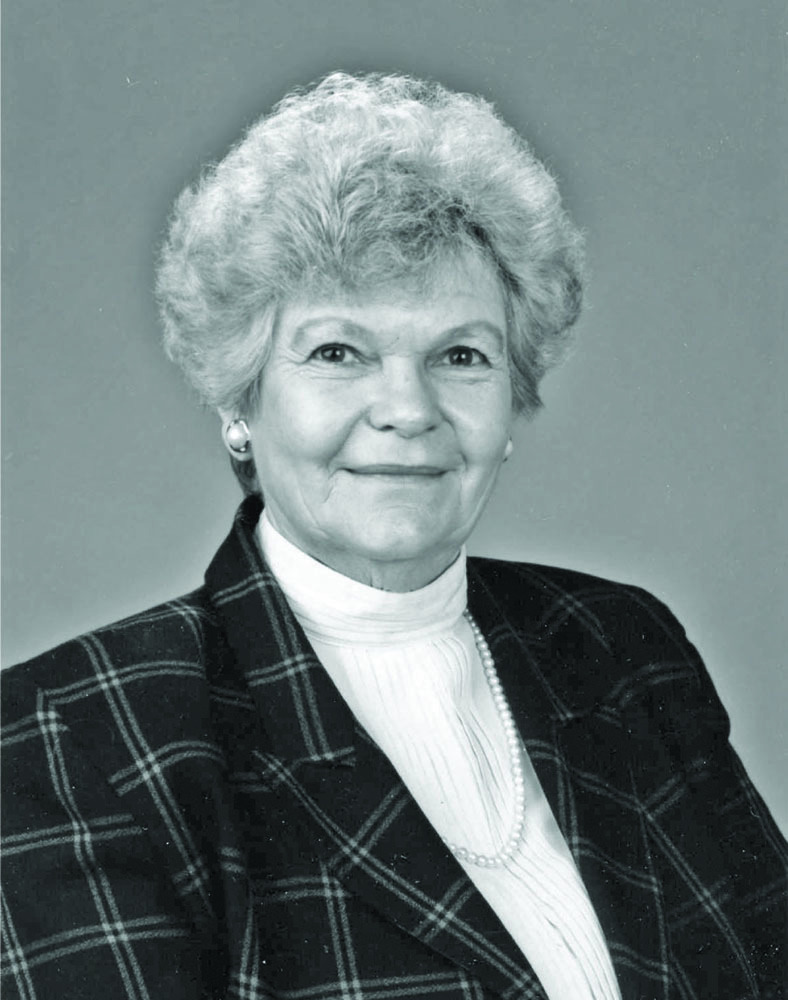
Image A: Pat Giles, 1987.
FOREWORD
Just occasionally in your life you meet someone who makes you think, I would like to be a leader like her. Senator Pat Giles is one of those people. A feminist who, with quiet but steely determination, has worked all her life with women to improve the lives of all women. She has been a role model and mentor for both of us and for women from all walks of life in Australia and overseas.
This inspiring biography encompasses four decades of stories in which women claimed and won their right to choose, their right to be heard and their right to make decisions about their own bodies and lives.
Pats years of community activism and sheer hard work paved the way for women to achieve greater status and equality in the trade union movement, the Australian Labor Party, in federal and state parliaments and in international forums on peace and social justice. Her work has made all these institutions and forums serve women better. Most were overwhelmingly male, and it took courageous and determined women like Pat to persevere, argue and establish the necessity for gender equality.
Internationally, she is respected for her work in advocating world peace and in raising the status of women in developing countries, particularly in terms of womens health.
At home Pat worked in parliament and in the community to ensure Australian women had access to quality services in health, early childhood care, aged care, education and housing, as well as protection from family violence. Her capacity to listen and to be a fearless advocate on behalf of people less powerful, has empowered many more women to enter public life to play their part in progressive political and social changeand no doubt her example will continue to inspire them.
Joan Kirner and Cheryl Davenport
INTRODUCTION
Pat Giles was an Australian Labor Party senator during the Hawke and Keating governments of the 1980s and early 1990s. When she entered parliament, she was fifty-two years old. She came to the Senate not as a raw recruit but as an experienced trade unionist, Australian Labor Party policy maker, feminist campaigner, and grassroots activist in the education and womens health arenas. In a public life spanning five decades, beginning in her early adulthood in the 1960s with community-based education campaigns, and continuing into the 21st century with an ongoing commitment to womens health issues locally, nationally and internationally, Pat Giles earned a reputation as a determined and intelligent campaigner and lobbyist. Hers was a life dedicated to improving the status of women and others who experience disadvantage. Ironically, although her activities within the trade union movement, the ALP, the Senate and the United Nations were to have a profound impact on the lives of ordinary Australian women and men, her story is not widely known. (Image B)
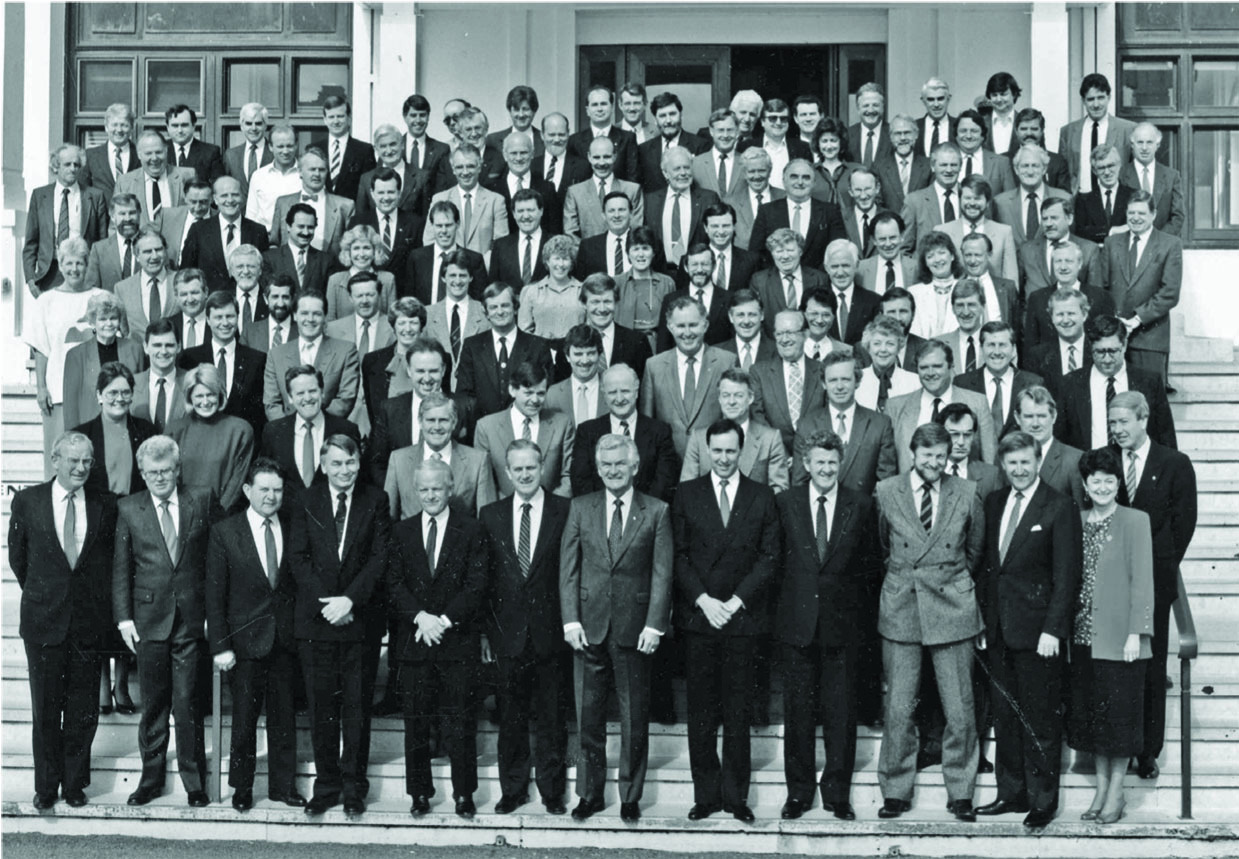
Image B: The Hawke Labor government, 1987. Pat, fourth row back, far left.
In the context of the world of social and political protest, there are two unusual features of Pat Giles activist engagement. The first concerns her desire to work within existing institutions (specifically, the trade union movement and the Australian Labor Party) to enact the processes of social change. Unlike separatist feminists who saw engagement with existing patriarchal structures as something of a betrayal of feminist integrity,[1] she sought the reform of those same institutional structures through the introduction of practical policies to benefit women in particular and the disenfranchised in general. Australian feminism is noted for its diverse approach to enacting social change[2] and Pat was one of the women who saw the value of working inside the institutions whose patriarchal values she contested. Not surprisingly, her methods were not always appreciated by her feminist sisters.
The second unusual feature of her passionate commitment to the political process is the quality of that passion. Rather than taking the form of a dramatic conflagration that one might normally associate with passion, Pats commitment can be viewed as a steady, quietly burning flame. This is entirely consistent with her approach to life. Hers is not a flamboyant personality. She is not known for charisma. Heads do not always turn when she enters a room. But as everyone who has worked with her will attest, her determination is unflagging, and her energy indefatigable. People love and admire Pat Giles not for any quicksilver quality but for her steadiness, her even-temperedness and her practical approach to life. She is known for her ability to work with people who are different from herself, and widely admired for her capacity for sheer hard work.
The writing of this life story began with a long conversation at a gathering of women in December 2004. The occasion was the annual Christmas dinner of the Patricia Giles Centre in the northern suburbs of Perth, Western Australia. The Centre, established in 1992, is a feminist, non-profit organisation committed to providing accommodation, counselling and education services to women and children who have experienced or witnessed domestic violence. To her great delight, Di Lesley, a counsellor at the Centre, found herself seated beside a 75-year-old Pat Giles. Di was curious to find out more about this gracious, white-haired, short and sturdy woman for whom the Centre had been named, and opened the conversation with a leading question about her life. Two hours later the stories were still flowing. Di left the dinner with mixed emotions: admiration for Pats activism and energy; gratitude at having had the chance to talk with Pat at this stage in her life; and indignation that so few people, herself included, knew the story of her five decades of activism. A few days later Di approached Kedy Kristal, the Chief Executive Officer of the Centre, to discuss the possibility of writing a biography of Pat. Kedy called Pat to ask if this were already being done. No, she replied, but my daughters are always telling me that someone should do it. Kedy supported Dis involvement in such a project on behalf of the Patricia Giles Centre and approached her friend and colleague Sherry Saggers for further research and funding support. Sherry agreed to head the project and assembled a research team comprising Lekkie Hopkins, a feminist scholar, oral historian and archivist from Edith Cowan University; Lynn Roarty, then research officer in the Centre for Social Research at Edith Cowan University, who was also completing her PhD in womens studies at Murdoch University; and Di Lesley. And so the project was born. (Image C)
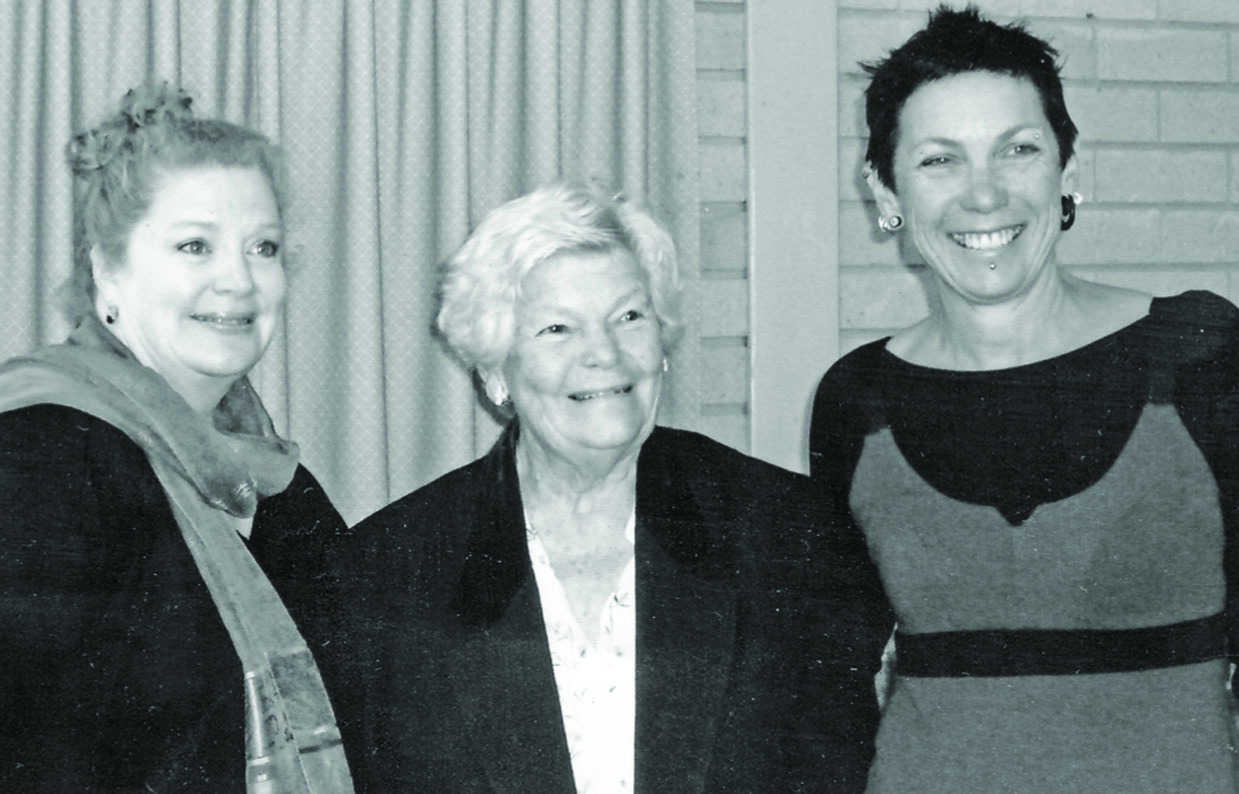
Image C: At the Pat Giles Centre with Sue Ellery (left) and Kedy Krystal, 2006.
Interviewing of Pat Giles and of her family, friends, colleagues and contemporaries began in November 2005, and continued into 2006. Archival research was carried out during 2006 and into 2007. To satisfy the funding bodies, the research team was required to research and write at least one scholarly paper for publication in an academic journal. Accordingly, papers have been published by the feminist journals



